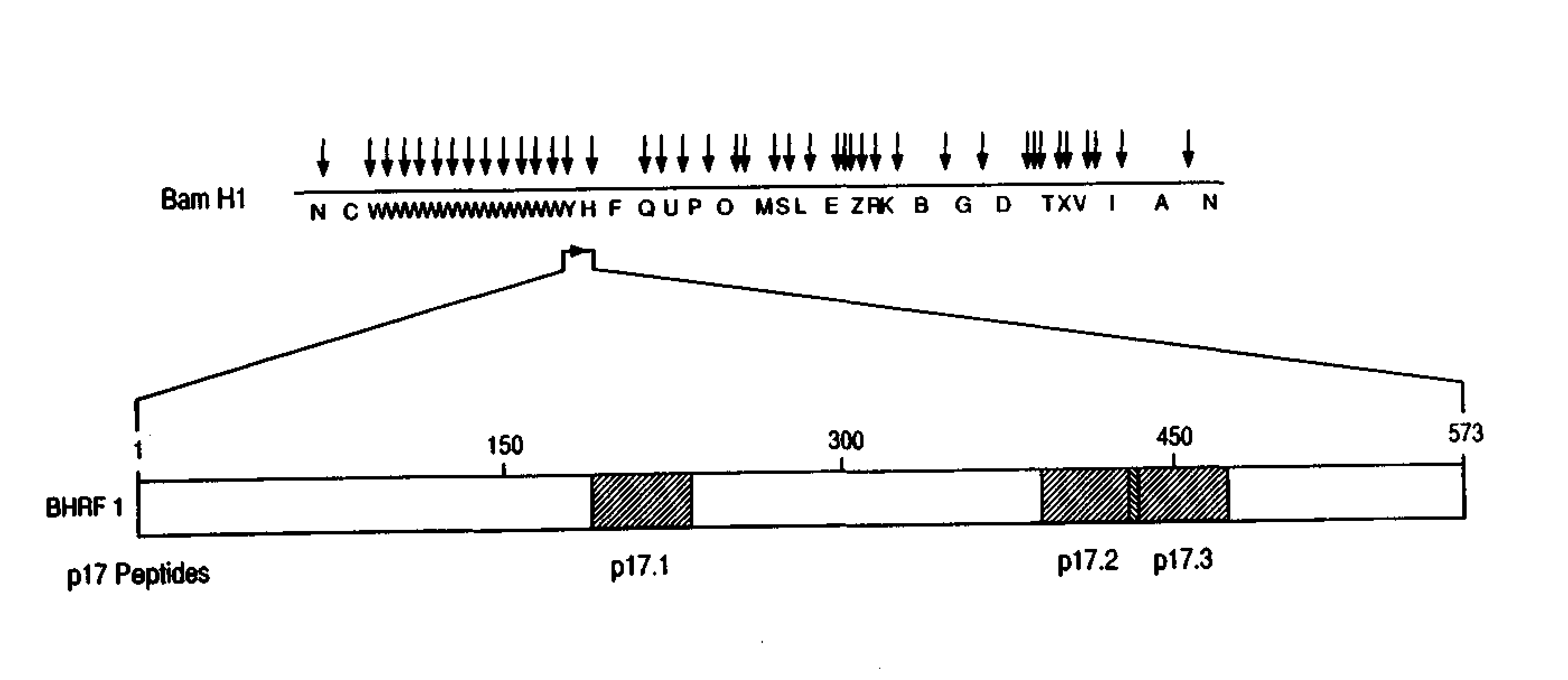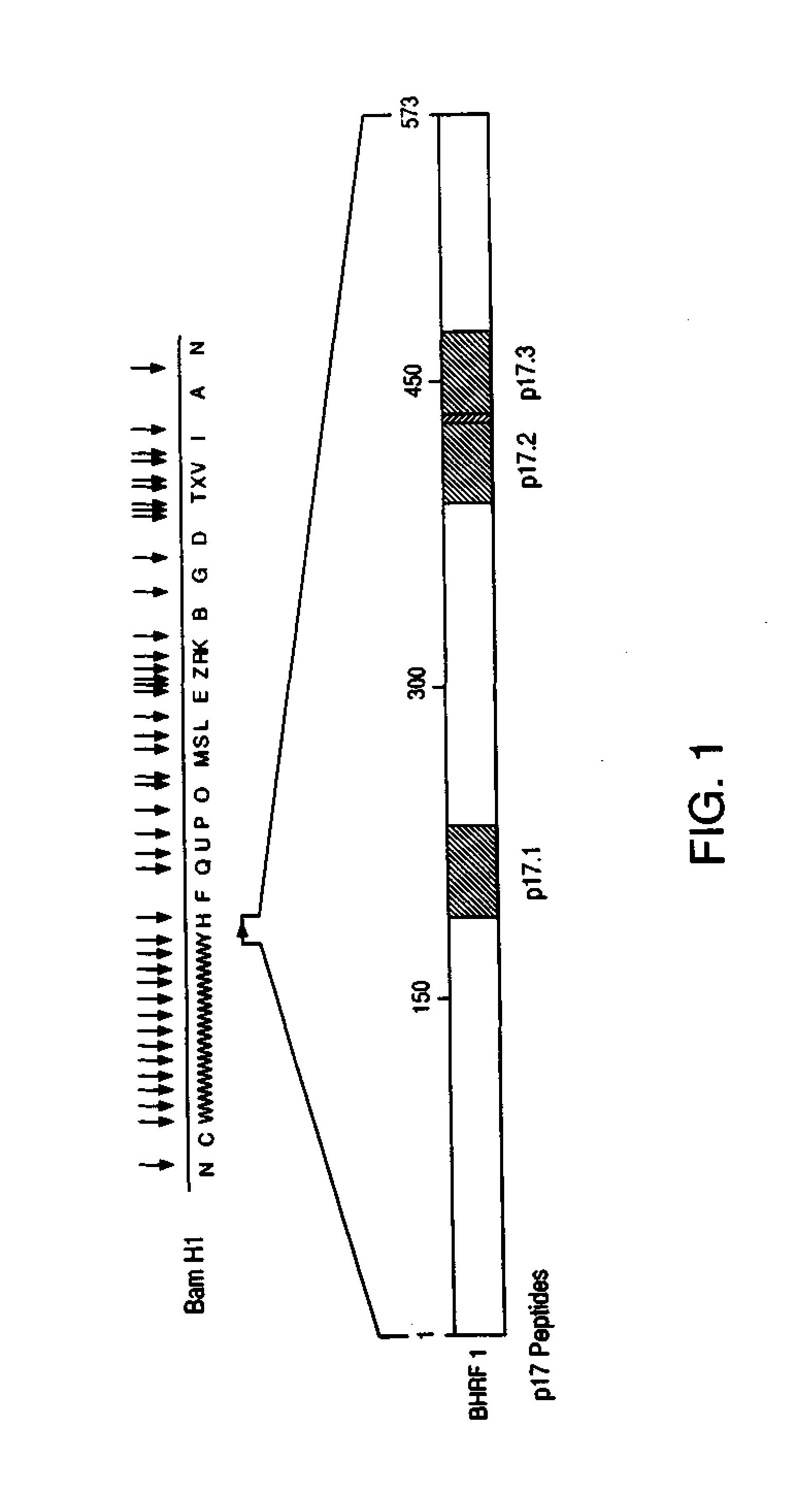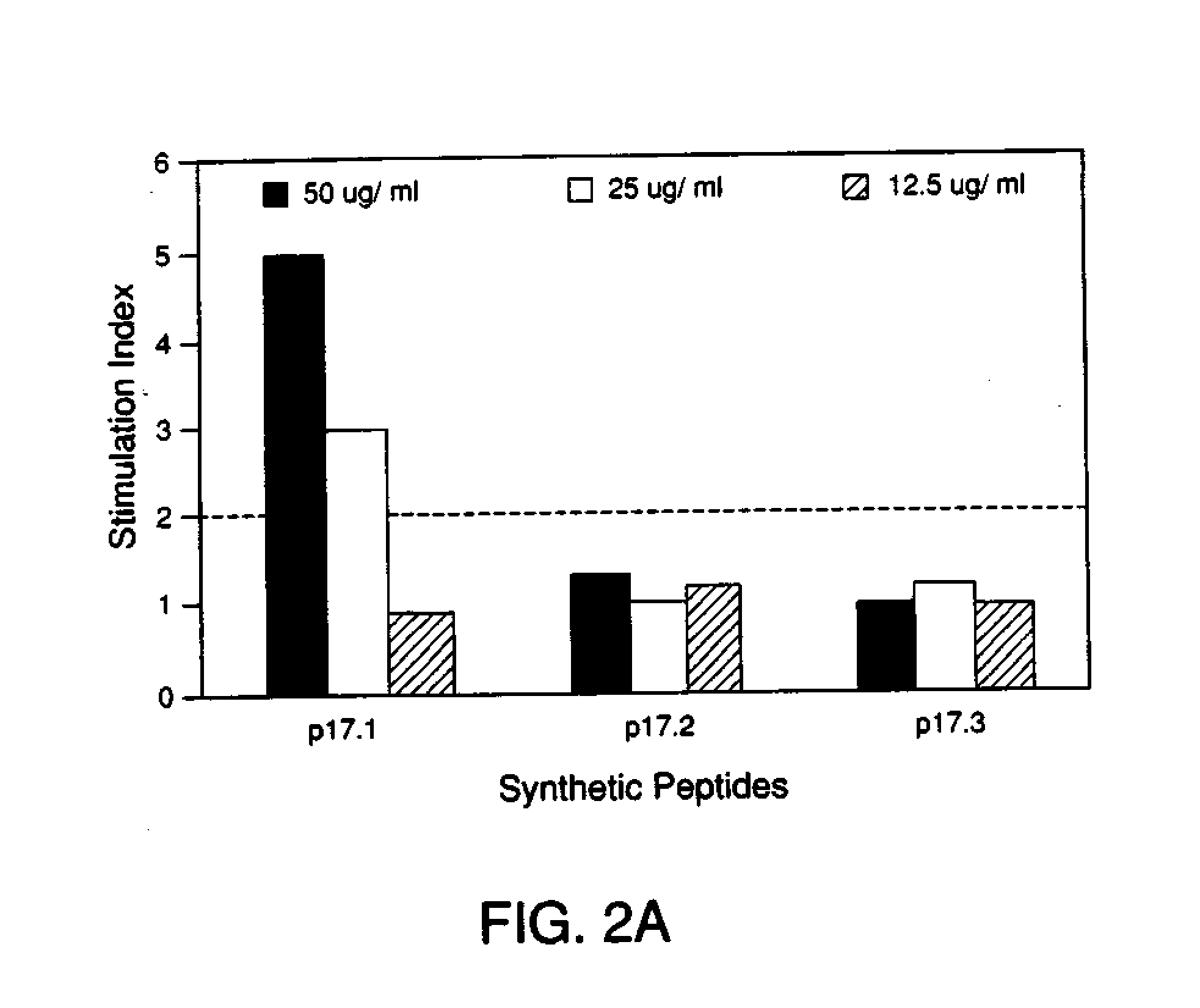Immunoreactive peptides from epstein-barr virus
a technology of immunomodulatory peptides and epsteinbarr virus, which is applied in the direction of peptides, enzymology, and infusion cells, can solve the problems of inability to detect antibodies in patients with antinuclear and anticytoplasmic antibodies, no reliable method of determining, and no predictable results
- Summary
- Abstract
- Description
- Claims
- Application Information
AI Technical Summary
Problems solved by technology
Method used
Image
Examples
example 1
Synthesis of p17 and p50 Polypeptides
[0084]Potential T cell epitopes on the p17 protein were identified using Berzofsky's algorithm (AMPHI Program) (1987). This algorithm postulates that T-cells preferentially interact with peptides that are amphipathic and which form an alpha helical configuration. Based on these characteristics, candidate epitopes on the p17 and p50 proteins were mapped and were found scattered throughout the molecule. The epitopes with the highest amphipathic scores were synthesized and employed in the studies. Out of 8 predicted epitopes on p17, the 3 with the highest scores were synthesized as 15 amino acid residues based on the nucleotide sequences encoding for these putative epitopes (FIG. 1, Table 1). Peptide synthesis was carried out using the solid phase method of Merrifield (1963) on an Applied Biosystems ABI 430-A automated peptide synthesizer using hydroxybenzotrizole hydrate / dicyclohexylcarbodiimide activation as described (Curtiss, L. K., et al., J. B...
example 2
Proliferative Response of PBL to Synthetic Peptides
[0085]Cells. The P3HR-1 cell line, established from an African Burkitt's lymphoma (ABL) biopsy, was the source of the native p17 component of the EA-R complex in these experiments (Himuna, Y., et al., J. Virol., 1:1045-1051, 1967). The cells were grown in the presence of RPMI 1640 medium supplemented with 10% heat-inactivated (56° C., 30 minutes) fetal calf serum (FCS), 2 mM L-glutamine and 50 μg per ml gentamycin at 37° C. The cells were passaged every 3-4 days by dilution with fresh medium to a cell concentration of 5×105 cells per ml.
[0086]For antigen production, P3HR-1 cells were activated with 20 ng per ml TPA (12-0-tetradecanoyl-phorbol-13 acetate) and 3 mM sodium butyrate for 48 hours. This procedure generally results in the induction of expression of this antigen in more than 70% of the cells as determined by immunofluorescence (Pearson et al., Virol., 160:151-161, 1987).
[0087]ELISA. The ELISA for measuring specific antibodi...
example 3
Fractionation of PBL into CD4+ and CDB+ Subpopulation
[0093]PBL enriched for T-cell subpopulations were isolated by depleting a particular population by antibody / complement-mediated cytotoxicity. CD4+ cells were prepared by lysing CD8+ cells with anti-CD8 antibody and rabbit complement whereas the CD8+ T cell subpopulation was enriched by lysing CD4+ cells with an anti-CD4 antibody and rabbit complement.
[0094]PBL were resuspended in RPMI-1640 medium containing 2 mM L-glutamine, 25 mM HEPES, and 10 μg per ml gentamicin (HEPES media) at a concentration of 20×106 cells per ml. T cell specific MAb, OKT4 or OKT8 (Ortho Diagnostics Inc.), was added to the cells at the optimal concentration (previously determined by titration to give maximal lysis) and incubated on ice for 30 minutes. The cells were then washed with fresh HEPES media and resuspended at 10×106 cells per ml in baby rabbit complement (Pel-Freez Clinical Systems) diluted with the HEPES media to the appropriate concentration (pr...
PUM
| Property | Measurement | Unit |
|---|---|---|
| concentration | aaaaa | aaaaa |
| pH | aaaaa | aaaaa |
| pH | aaaaa | aaaaa |
Abstract
Description
Claims
Application Information
 Login to View More
Login to View More - R&D
- Intellectual Property
- Life Sciences
- Materials
- Tech Scout
- Unparalleled Data Quality
- Higher Quality Content
- 60% Fewer Hallucinations
Browse by: Latest US Patents, China's latest patents, Technical Efficacy Thesaurus, Application Domain, Technology Topic, Popular Technical Reports.
© 2025 PatSnap. All rights reserved.Legal|Privacy policy|Modern Slavery Act Transparency Statement|Sitemap|About US| Contact US: help@patsnap.com



